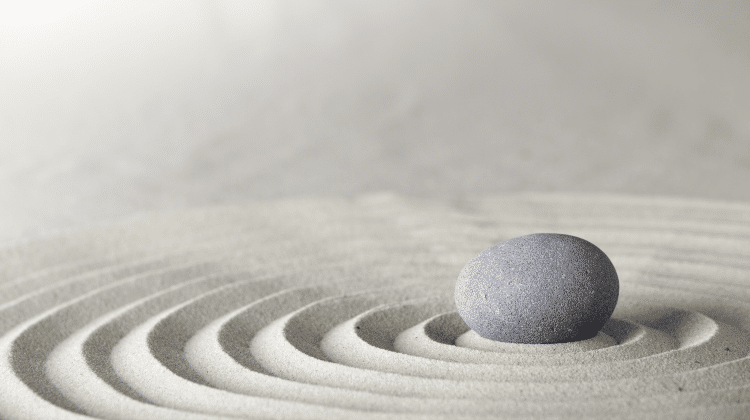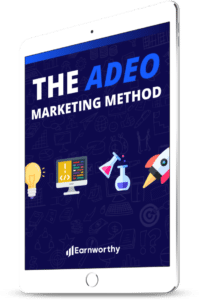
Productivity can mean different things to different people. However, the term is used quite often to discuss how we should use our time more efficiently.
Another side of productivity deals not with how we use our time, but how we use the various tools at our disposal to get our work done.
And one of the tools we all use quite often is our mind. But guess what? Lots of us use it unproductively without even realizing it.
By now, you’re either agreeing with me and waiting to see where I’m going with this, or you’re shaking your head while thinking I’m crazy.
So, let me get to the quote I referenced in the title of this post, and then I’ll connect the dots to my statement above.
The quote that changed how I work was by none other than David Allen, who is the founder of the “Getting Things Done” (GTD) work-life management system.
“Your mind is for having ideas, not holding them.” – David Allen
That’s right, our minds are not meant for the endless storage of facts and figures, especially in a world where we can capture all of that information externally via apps and good old fashioned pen and paper.
David Allen believes that when it comes to work-life management, we should empty our minds, capture it all, and then start doing the tasks that matter most to us, instead of just thinking about them.
“Your mind is for having ideas, not holding them.” – David Allen (@gtdguy) Read more: http://t.co/t55eNy1EUC #GTD #Productivity
— Nicholas Scalice (@Earnworthy) June 29, 2014
A related philosophy, and a source of inspiration for Allen was a quote by Bruce Lee:
Empty your mind, be formless, shapeless – like water. Now you put water into a cup, it becomes the cup, you put water into a bottle, it becomes the bottle, you put it in a teapot, it becomes the teapot. Now water can flow or it can crash. Be water, my friend.
Having a “mind like water” works fantastically well, because it helps us externalize our tasks and act upon what is most important to us at any given moment.
It’s not easy to achieve either, but it is worth the effort. As fellow productivity and GTD enthusiast Leo Babauta explains, “I think the appeal is the calmness and peace that you are trying to achieve. Have everything in its place, and empty your mind of busy-ness and junk. Then your are ready for anything that comes your way.”
Moreover, in the book that started it all, Getting Things Done, David Allen expands on the idea that our minds are for having ideas rather than holding ideas:
The short-term-memory part of your mind—the part that tends to hold all of the incomplete, undecided, and unorganized “stuff”—functions much like RAM on a personal computer. Your conscious mind, like the computer screen, is a focusing tool, not a storage place. You can think about only two or three things at once. But the incomplete items are still being stored in the short-term-memory space. And as with RAM, there’s limited capacity; there’s only so much “stuff” you can store in there and still have that part of your brain function at a high level. Most people walk around with their RAM bursting at the seams. They’re constantly distracted, their focus disturbed by their own internal mental overload.
But of course, to truly use our minds in this capacity, we need to have a trusted and secure place to store all of the information floating around in our head. Virtually all of our action items, to-do lists, important creative thoughts, etc. should be captured someone externally.
Thankfully, we live in an age where technology makes this quite easy. Personally, I collect this “stuff” in a few different places. The two that I keep coming back to most often are Evernote and Todoist (my task management tool of choice).
With Evernote, I can clip articles from the web, capture quotes, keep lists of future blog post titles that I want to write, and find pretty much anything that I’ve saved in just a few seconds. And since it is a cloud-based tool, I can access this information from anywhere.
For my action items however, I couldn’t get by without a solid task management tool. Things and Todoist are my two favorites and I’ve been switching between them in recent months, but right now, I’m primarily using Todoist. They have a desktop version, web-based version, and apps for iOS or Android.
What I like most about Todoist is their clean, simple interface that loads fast. It’s not cluttered and it allows me to capture something that I need to do in an instant. Once I capture it, I can safely forget about it until it is time to get it done.
But this article is not about the tools I use. It is about the concept of how we should use our minds, as processing tools rather than as storage devices. Once you find yourself in alignment with this practice, your entire workflow changes for the better. You’ll feel less stressed, because you will finally have less on your mind.
At the same time, you’ll feel more organized, because you can now see exactly what you need to do and work on prioritizing your next actions.
The particular system that David Allen has created within the Getting Things Done framework is much more complex than one blog post could ever explain. So if you found any value at all in the concepts mentioned above, I highly recommend that you read his book and take notes.
You won’t be disappointed.






